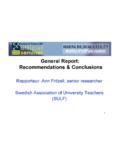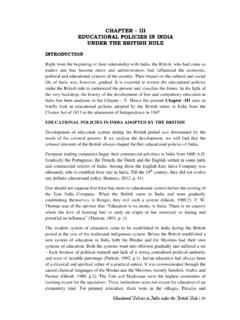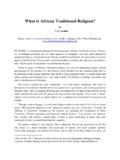Transcription of The Origins of Quality Assurance in Higher Education - aic.lv
1 ESIB The National Unions of Students of Europe European Student Handbook on Quality Assurance in Higher Education Contents: i Introduction to ESIB ii Foreword iii Authors biographies iv Definitions in Quality Assurance Chapter 1 Origins of Quality Assurance in Higher Education - History of QA, its Origins and application in Higher Education . Chapter 2 Quality Assurance at a European and International level - What is the status of QA at a European and International level and what trends and policies have developed? Chapter 3 Comparative analyses of National QA systems Several case studies of national QA systems.
2 Chapter 4 Local Dimensions students involvement in QA - How do students take part in the Quality Assurance process? What are the best methods of positive involvement? Chapter 5 Future of Quality Assurance - What challenges and developments lay ahead for QA? 2 Introduction to ESIB ESIB the National Unions of Students in Europe ESIB is the umbrella organisation of 50 national unions of students from 37 countries and through these members represents more than 11 million students. The aim of ESIB is to represent and promote the educational, social, economic and cultural interests of students at a European level towards all relevant bodies and in particular the European Union, Council of Europe and UNESCO.
3 Aims and objectives: ESIB the National Unions of Students in Europe has the following goals: to promote the views of students on the educational system as a whole. to promote the social, economical, political and cultural interests of students and the human rights of students which have a direct effect or an indirect effect on Education and on the status and welfare of students in society. to promote equal opportunities for all students regardless of their political belief, religion, ethnic or cultural origin , gender, sexual orientation, social standing or any disability they may have.
4 To promote equal chances of access to Higher Education for all people. to promote European and global co-operation and to facilitate information exchange with students and students organizations. to promote co-operation with other organised groups in matters pertaining to Education and student life. to provide assistance and support to National Unions of Students across Europe hereafter referred to as NUS s in their work to protect student interests. For more information about the structure, members, policies and work of ESIB visit: 3 Foreword-About the QA project The ESIB Quality Assurance project was initiated in June 2001 and was funded by the European Commission, the Council of Europe and the Dutch Government.
5 The project lasted for slightly more than a year and had the following key objectives: Improving Quality Assurance processes and students involvement in them by: Collecting, analysing and disseminating theory, good practices and experiences of (student involvement in) Quality Assurance in Europe, focusing on exchanges between well-developed Quality Assurance systems and less developed. Raising awareness of the importance of (student involvement in) Quality Assurance processes. Identifying and promoting European-wide strategies to involve students and student organisations in Quality Assurance .
6 Promoting co-operation of European student organisations on one of the key themes of the Bologna process. The project had several target groups which it sought to involve in its work and also affect with its outcomes. These can be outlined as: Primary: students, especially those who are actively involved in organisations and bodies dealing with Quality of Education . Secondary: other parties dealing with Quality Assurance and student involvement in European Higher Education , such as educational staff and policy makers.
7 4 Throughout the time of the project a number of activities where undertaken which resulted in both direct and indirect outcomes towards the objectives of the project. The main activities are outlines below: October 2001-European Student Seminar on Quality Assurance . This seminar brought together student representative and QA experts from throughout Europe to examine developments in QA. November/December 2001- A set of checklists and guidelines of best practices arising from the seminar was prepared and distributed to member organizations.
8 January/June 2002- The production of the European Student Handbook on Quality Assurance for local and national student representatives was started with the completion of the first edition in June 2002. May 2002 Training for national student representatives on involving students in Quality Assurance mechanisms. Quality Assurance and student involvement in it has been topic of work within ESIB for several years and we hope that through the production of this handbook student representatives will be encouraged to get further involved in the QA process.
9 Students are one of the key partners within Higher Education and should be involved in the Quality mechanisms and this handbook will arm students with the tools to be effective and active participants in the future development of a high Quality tertiary Education system. Finally, I would like to the two members of the Executive Committee (EC) that took responsibility for the project, Marlous Veldt from EC2001 and John C Friend-Pereira, EC 2002, for their hard work in initiating the project and seeing it through to its conclusion.
10 I would also like to thank the Dutch National Union of Students, LSVb, for their support during the realization of the project. On behalf of the steering group of the project, 5 Martina Vukasovic ESIB Chair 2002 Authors Biographies John C. Friend-Pereira: John is a 24 year old student of Media/Communications and History in Mary Immaculate College, Limerick. He has been active in the student movement and in the last two years he has been the President of his local union and Equality Officer for USI, the Irish National Student Union.











